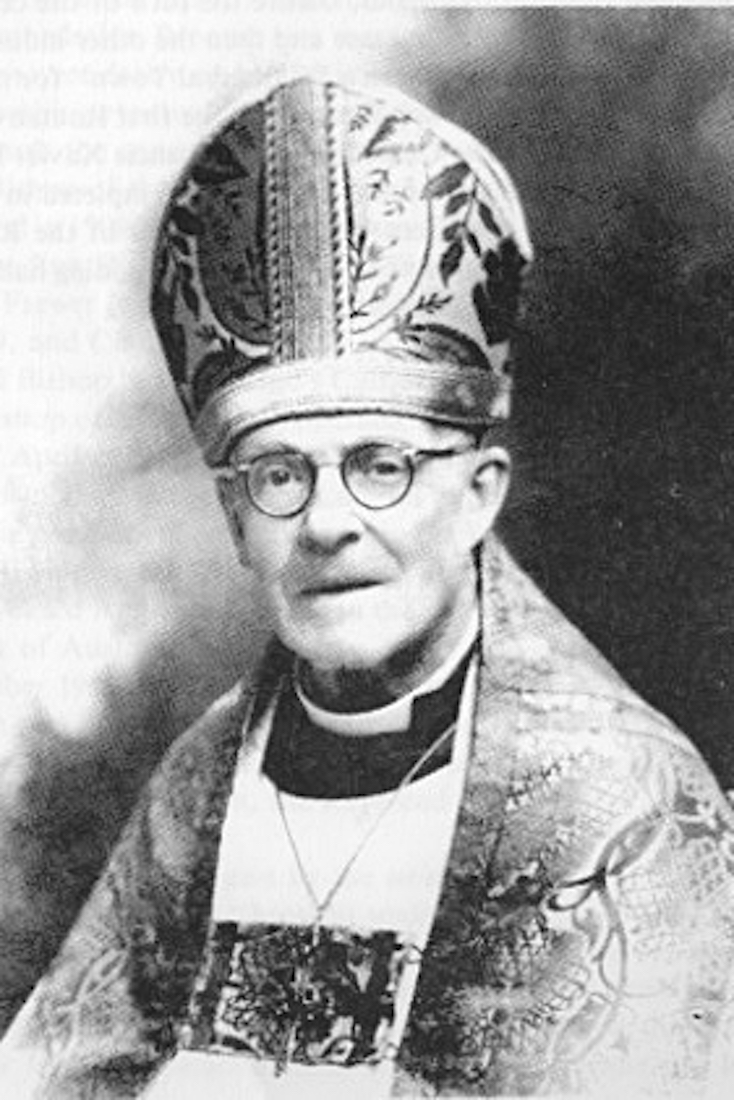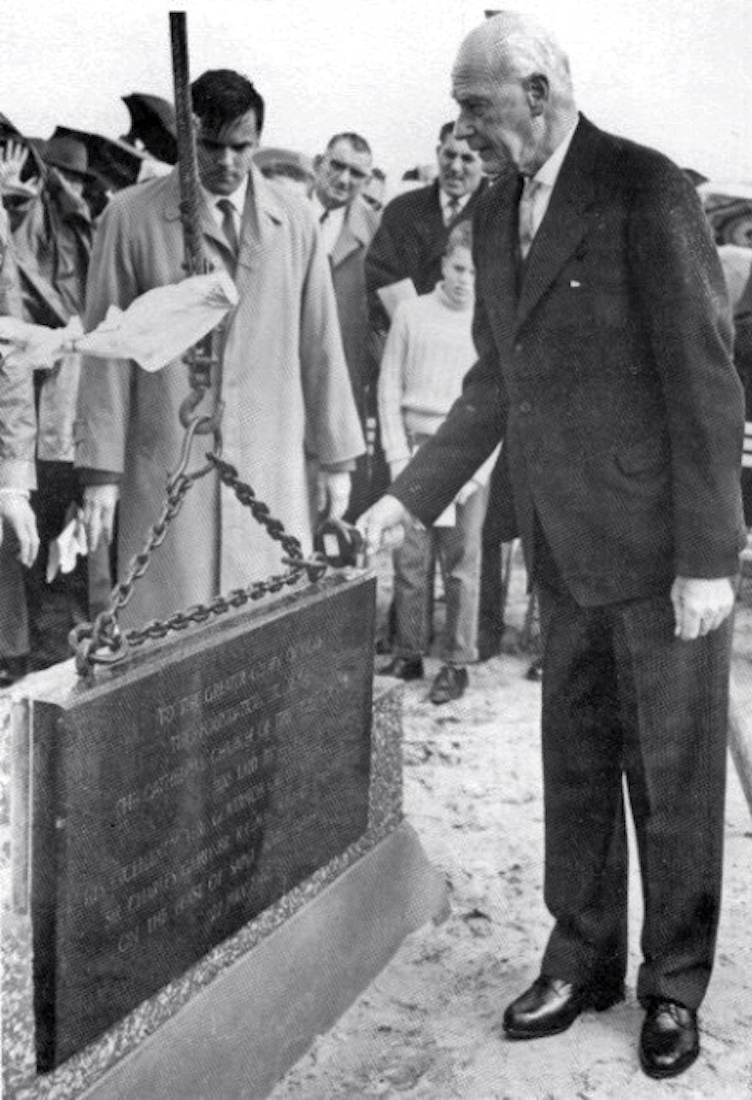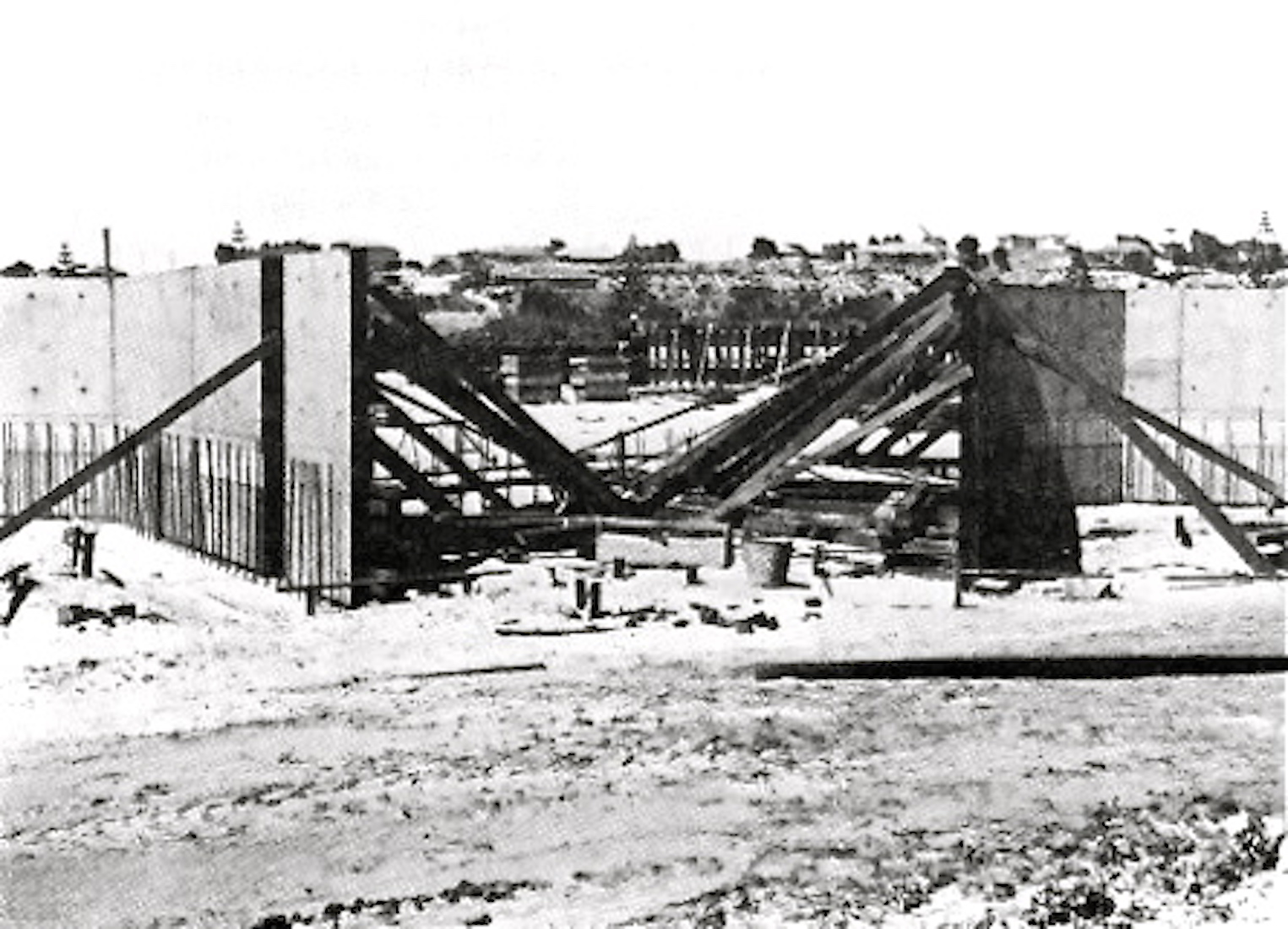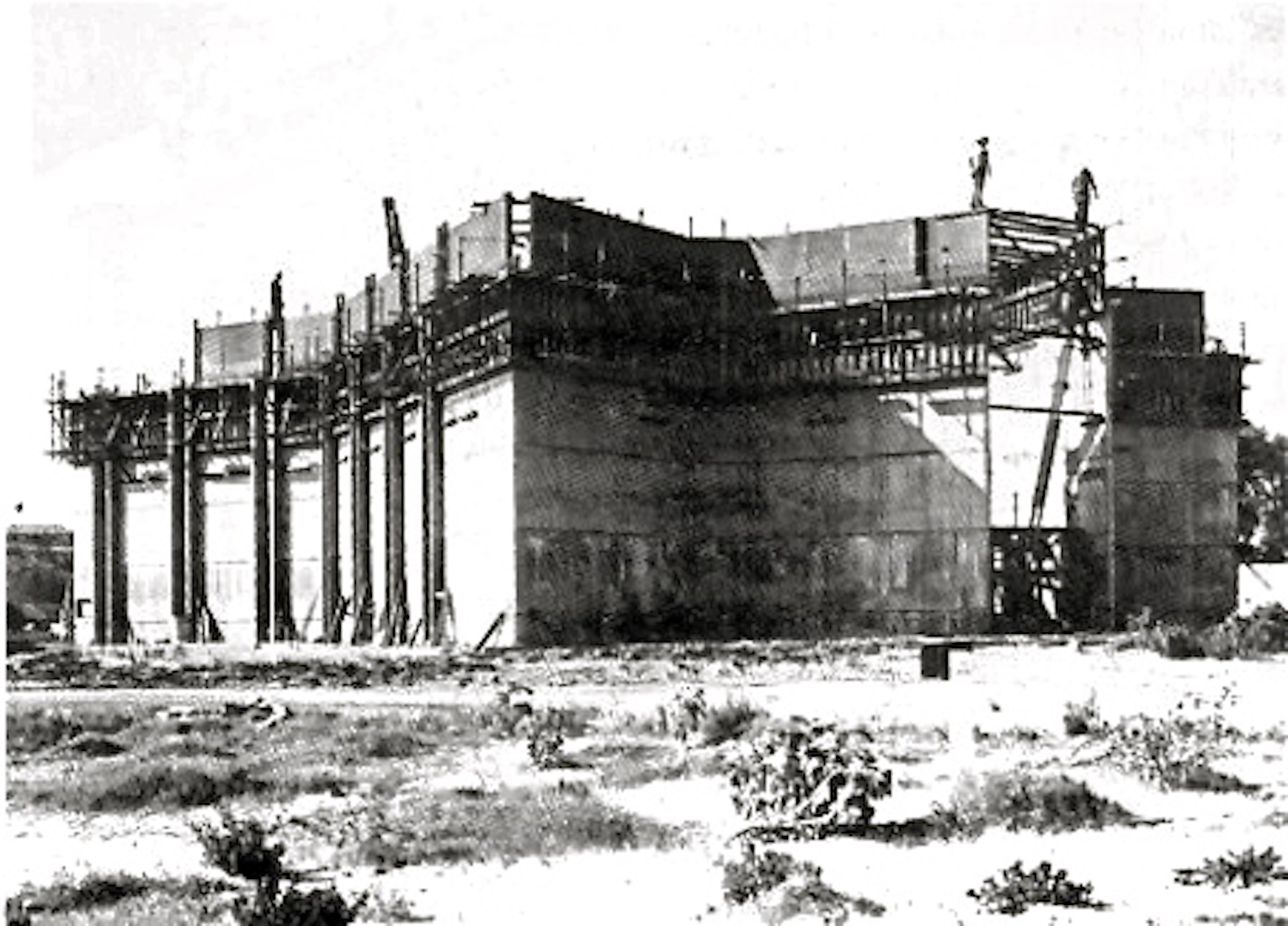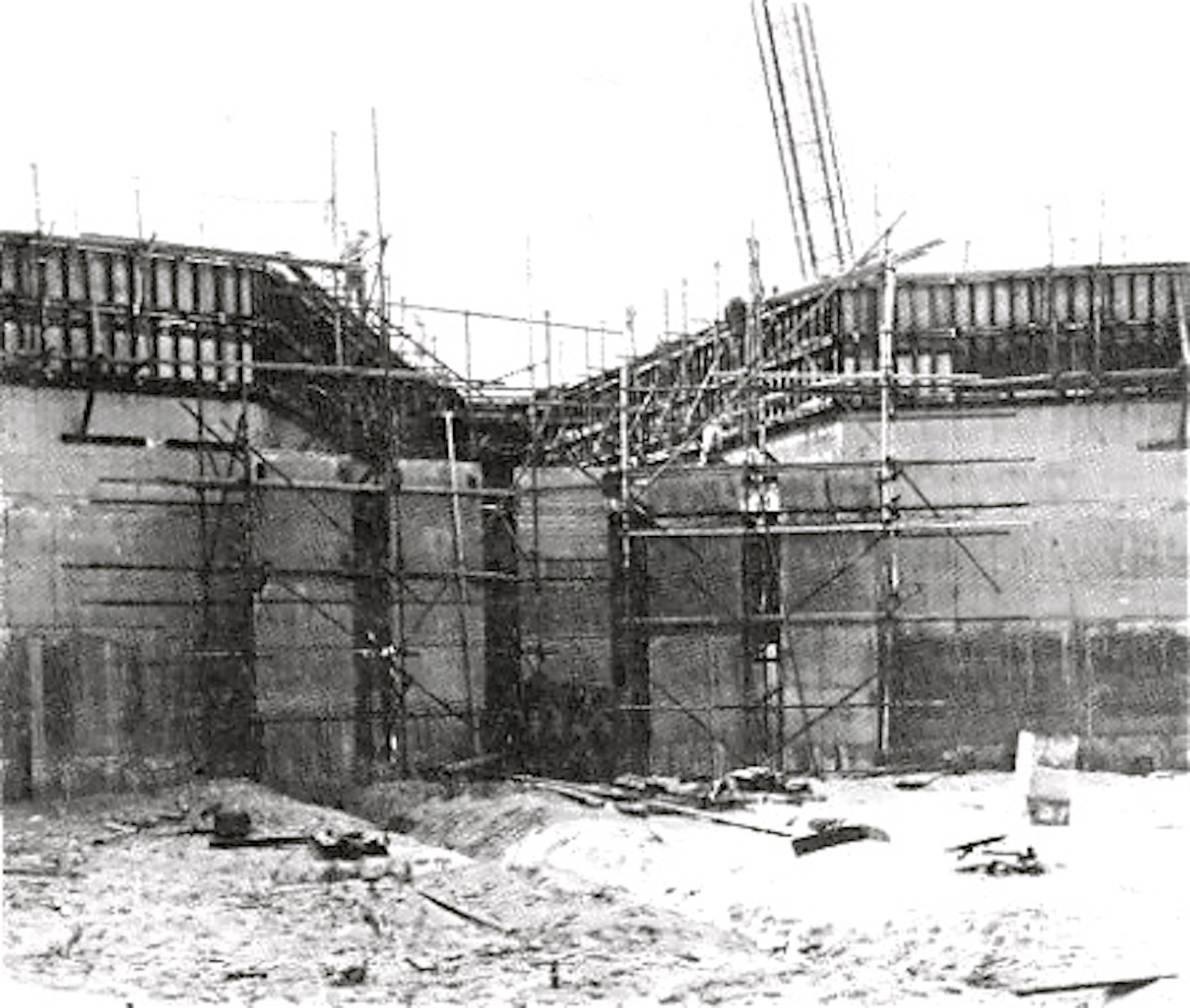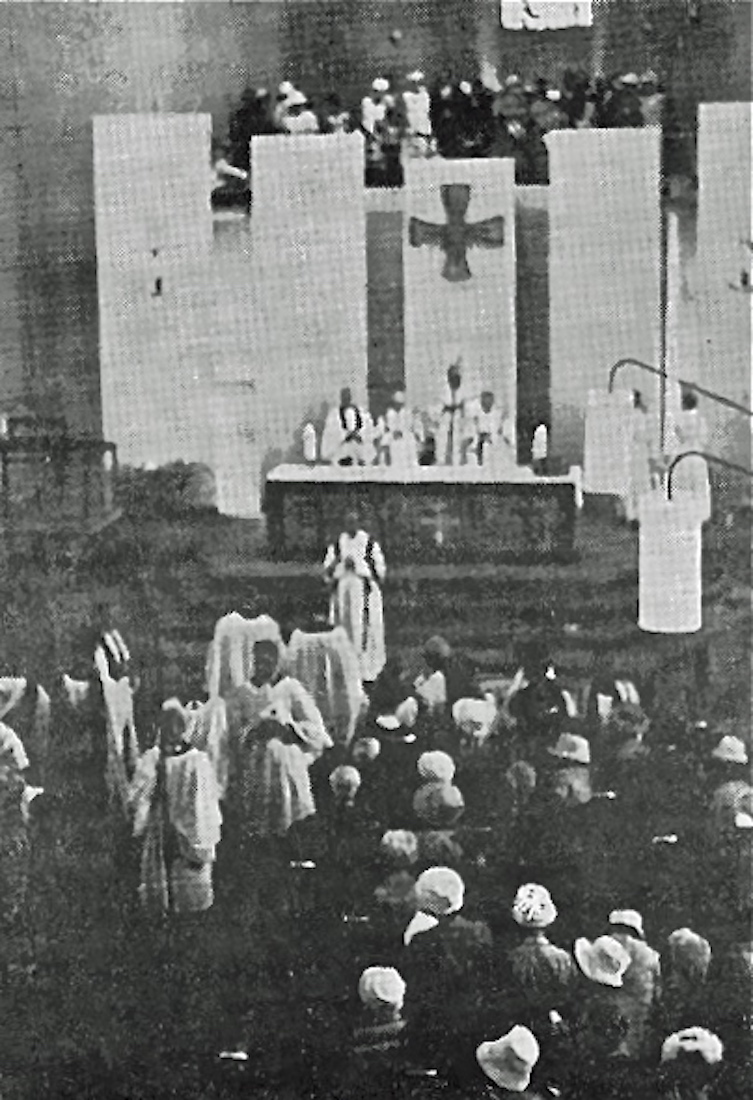
Beneath the Southern stairs to the choir loft is set the Lincoln Stone [30]. Marked 1092, the stone comes from Lincoln Cathedral, England where Bishop John Frewer was ordained Priest in 1909. Not pictured, St Paul’s Stone (3A) can be found on the underside of the Northern stairs to the choir loft. This is a piece of marble from the reredos damaged during the London blitz of 1940. This completes our tour of Geraldton Cathedral. Some historic photographs and the Conclusion follow. PLAN
42. CHRIST CHURCH
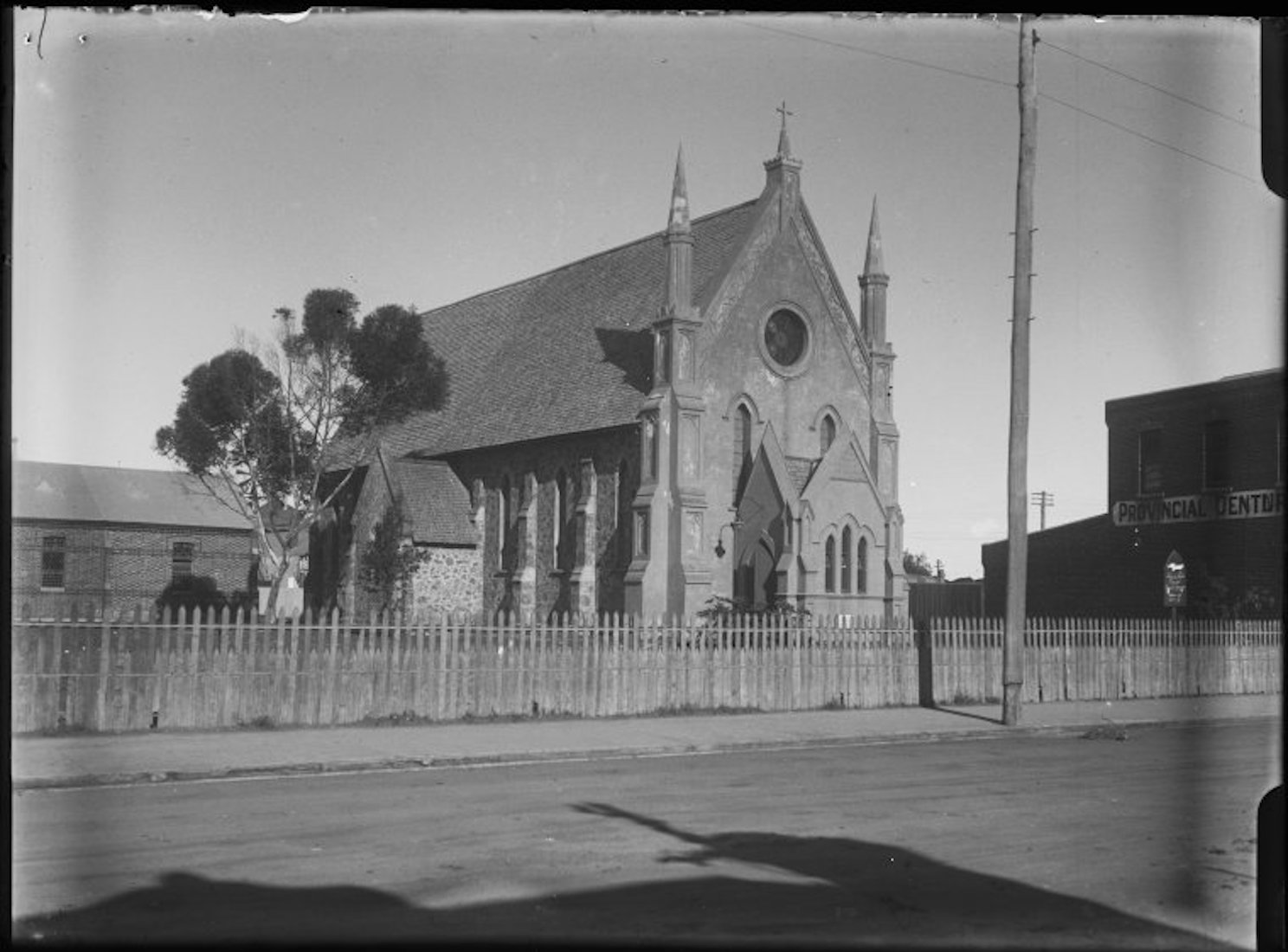
The Diocese of North West Australia was inaugurated in 1910 by the endowment of a bishopric, and the appointment of the first Bishop, Right Reverend Gerard Trower. The small Anglican church in Broome dedicated to the Annunciation of our Lady was chosen as his headquarters, and became the pro-Cathedral. Over time, plans were drawn up to construct a Cathedral in Broome, but although money was raised at the time, nothing eventuated. Prior to 1928, Geraldton had been part of the Perth Diocese, but after this time Geraldton was placed under the jurisdiction of the Bishop of the North West. Christ Church (pictured 1920 – 1925) was the Anglican Church in Geraldton at the time. [Photo credit : slwa b2106598]
43. BISHOP FREWER
The Reverend Canon John Frewer was enthroned as bishop of the North West in 1929. Like his predecessor, Bishop Frewer journeyed many miles tending to his flock in this the largest land based Anglican Diocese in the world. It was under the Chairmanship of Bishop Frewer in 1961 that plans were eventually made for a Cathedral to be built in Geraldton. It had been found that Christ Church was unsuitable, having been built around 1868–1869, and being in a state of gradual decay. Geraldton was chosen as it was the largest city in the Diocese, and a flourishing centre. [Photo Credits: this and future photos are taken from the Cathedral booklet.].
44. 1962 FOUNDATION STONE
Although Father Wilson worked in close liaison with Bishop Frewer, the overall concept of the Cathedral must be attributed to Father Wilson. The brief given to the Architect included: • The altar was to be the focal point as the building was essentially for a worshipping community. • To try to preserve a sense of ‘mysticism’, while avoiding the traditional idea of the priest and altar being far away from the people. • The Chapel of Our Lady should be if possible behind the High Altar as in medieval times ... After a time plans by the architect, Mr Edwin Whitaker, were accepted, and the laying of the foundation stone by Sir Charles Gairdner H. E., the Governor, took place in July 1962. The architect is looking on.
45. 1963 WEST END CONSTRUCTION
The day chosen for the laying of the Foundation Stone was a stormy one, with wind and intermittent rain. The crowd was enthralled by the Archbishop’s and Bishop’s processions approaching the building site with brilliant copes flowing, Bishop Frewer’s mitre resplendent, and staffs glinting in the wintry sunshine. Even though the winds raged, the Cross was still held high. Neither storm not tempest could move the assembled company of Christians until the ceremony was completed. The building of a Cathedral was a very great venture; it was not to be like any other building ....
46. 1963 NORTH WEST VIEW
Construction of the new Cathedral began early in 1963. As the walls rose in height, the unusual outline of this unique building became evident. It is also of interest to note that for the first time in the history of the building industry in Geraldton, a crane was used in the construction of a building. This was the view from the North West in July 1963.
47. 1963 VIEW TOWARDS SANCTUARY
When the reinforced concrete walls were completed, they were all surface sandblasted, both inside and out, to expose the coloured quartz aggregates. As a result, a pleasing rough textured finish of earthy lavender colour was created. The walls were maintenance free, a great advantage in the particularly harsh climate. This was the view looking towards the Sanctuary in July 1963.
48. 1964. CONSECRATION SERVICE
The Consecration of the Cathedral Church of the Holy Cross took place on Mothering Sunday, 8th March 1964, in a temperature of 44° ! Some 800 people filled the Cathedral for an impressive but solemnly joyous occasion, preceded by the brilliantly robed Processions of the Archbishop, and the Bishops of Kalgoorlie and Bunbury, moving through the Cathedral to their appointed places. There was controversy at the time by those who felt the high cost would be an impossible burden to carry. It was after all a brave decision to build a Cathedral in a huge and very sparsely populated Diocese, where parochial issues took precedence. I suspect the modern, rather stark design was (is?) also a cause of controversy. But ultimately the Church is the people, and we experienced great warmth from the people of this congregation.
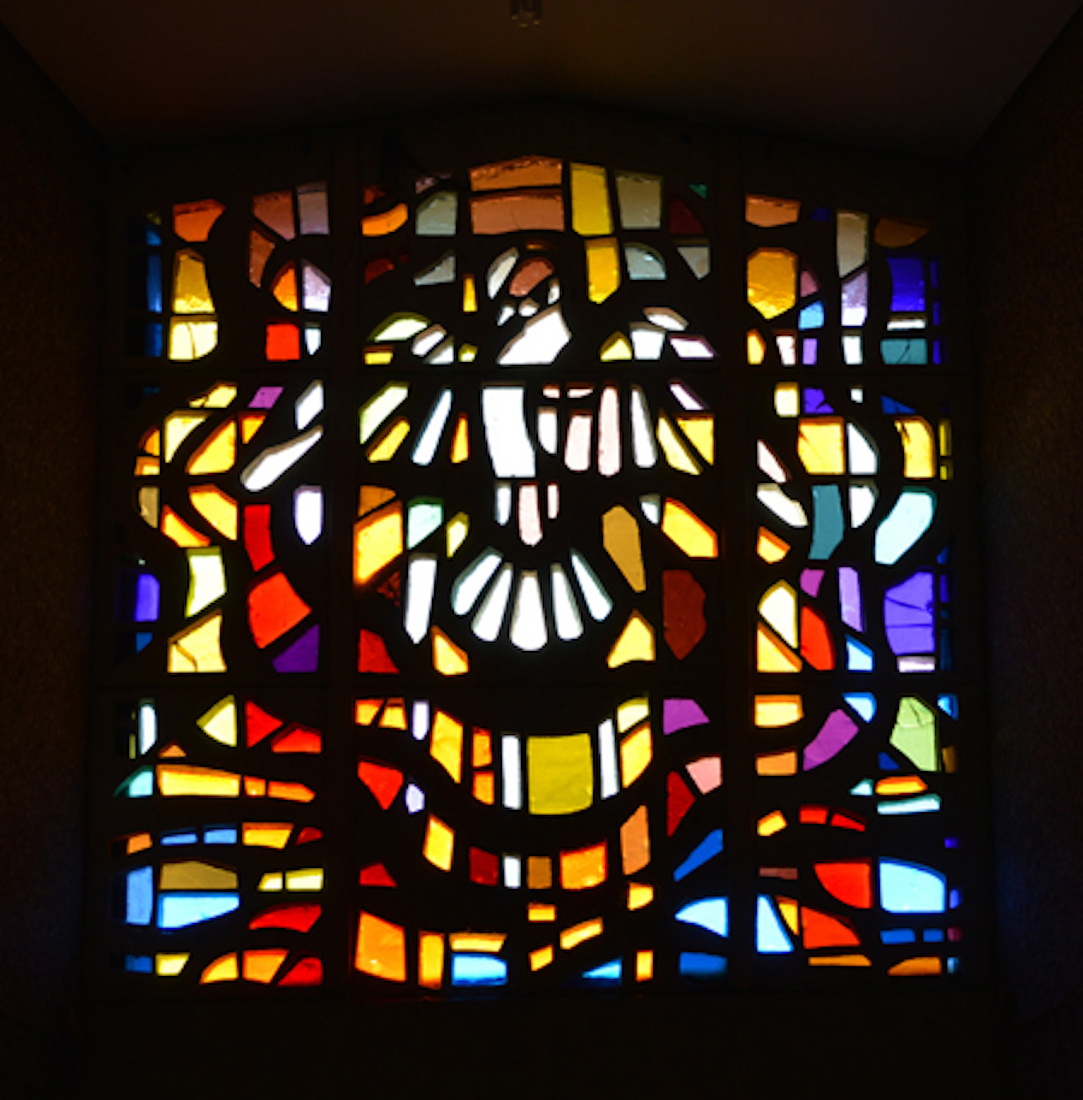
CONCLUSION
I hope you have enjoyed visiting the unusual Holy Cross Cathedral, Geraldton with me. I found it an interesting visit, and we enjoyed a Sunday service here.
I am happy to receive constructive comments or corrections concerning this website. The best websites are the ones which have no errors! I am grateful to my wife Margie who came to Geraldton with me, and who has proof-read these pages.
Much of the textual information for this site came from the excellent booklet ‘The Cathedral Church of the Holy Cross’ by Joan Downes, and I am happy to acknowwledge this.
The link for the Cathedral website is:
http://www.geraldtonanglicans.com.au
The photographs which appear on this site can also be found in higher resolution at:
https://www.flickr.com/photos/paulscottinfo/albums/
Site created 11 / 2012 ; modified 01 / 2016 ; reformatted 09 / 2020
Paul Scott

